-
Information and Communication Sciences Lab.Ⅱ
(Compulsory Course in the Department of Information and Communication Sciences)Experiments will be conducted on subjects specialized in the fields of electrical, electronic, information, and communication engineering. Specifically, they are focused on hardware technology and its applications in relation to information and communication sciences, including the fundamentals of digital communications, electronic circuit design, digital signal processing, and measurement and control. The purpose is to deepen understanding of the lectures on relevant subjects. The experimental topics consist of (1) digital modulation and demodulation scheme, (2) active filters using operational amplifiers, (3) digital signal processing of audio waveforms, and (4) measurement and control using neural circuit models. Both computers and measuring equipment are used in the experiments.-
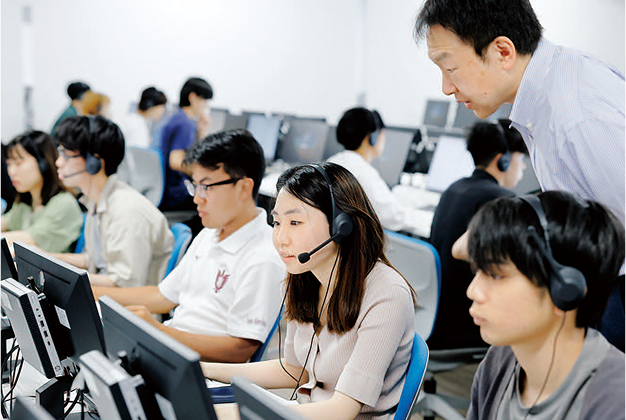 Students input their voices into a computer and then perform processing.
Students input their voices into a computer and then perform processing. -
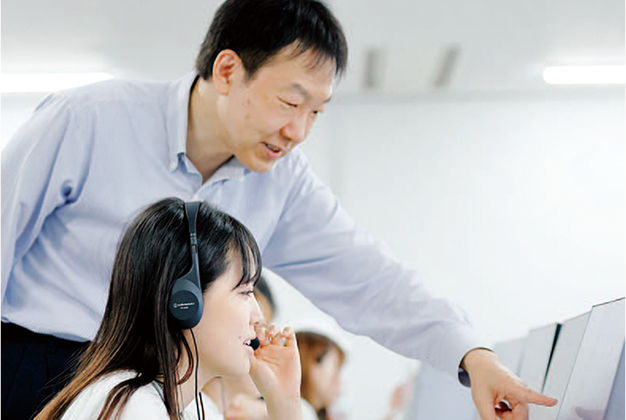 Students display the results on the screen and listen to the processed voices using headphones.
Students display the results on the screen and listen to the processed voices using headphones. -
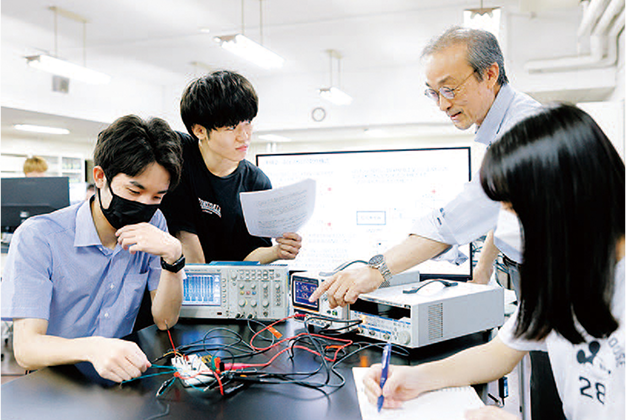 Students are measuring the characteristics of an active filter equipped with an operational amplifier.
Students are measuring the characteristics of an active filter equipped with an operational amplifier. -
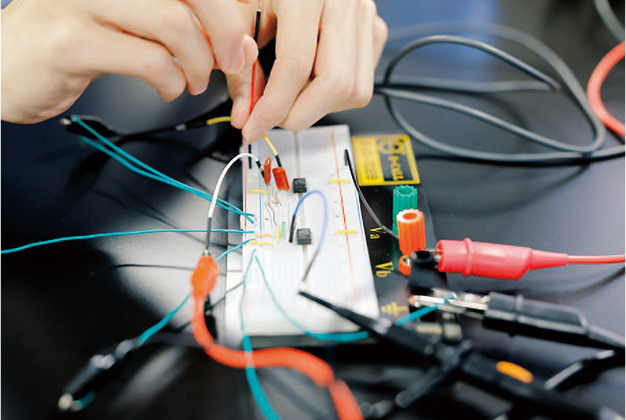 Students will work on wiring themselves to create an active filter and understand the role of each element.
Students will work on wiring themselves to create an active filter and understand the role of each element.
-
-
Informatics Exercise Ⅲ
(Compulsory Course in the Department of Information and Communication Sciences)Using Mathematica, LaTeX, MATLAB, and OpenCV (Python, C++), students learn practical programming on mathematical formula processing, advanced document editing, numerical calculations (vector and matrix operations, scientific and technical calculations, and 3D graphic display), and image and video processing. An active learning method is used, and students autonomously acquire knowledge and information technology that are directly connected to their graduation research and practical work.-
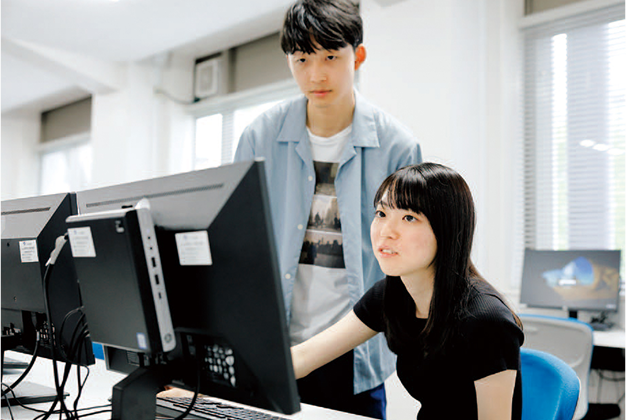 A graduate student (teaching assistant) is carefully assisting students with any questions they may have.
A graduate student (teaching assistant) is carefully assisting students with any questions they may have. -
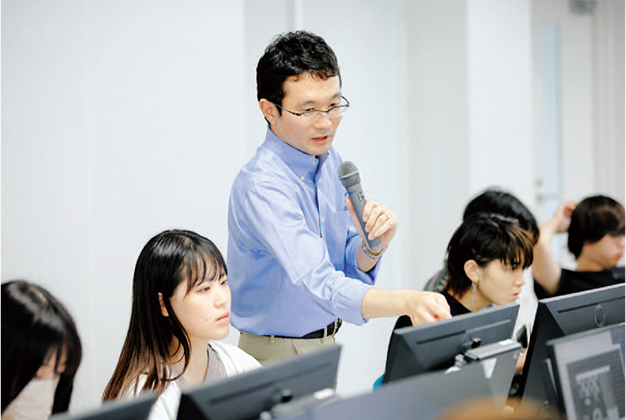 The instructor will proceed with the exercises according to the students’ progress and level of understanding.
The instructor will proceed with the exercises according to the students’ progress and level of understanding. -
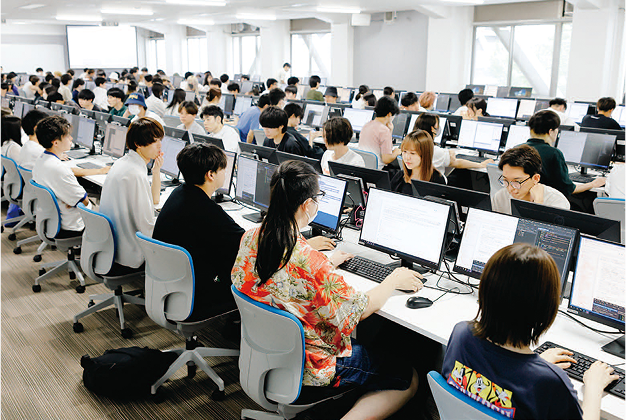 The screen of the instructor’s PC will be displayed on the monitors between adjacent seats in the computer room, enabling face-to-face exercises.
The screen of the instructor’s PC will be displayed on the monitors between adjacent seats in the computer room, enabling face-to-face exercises. -
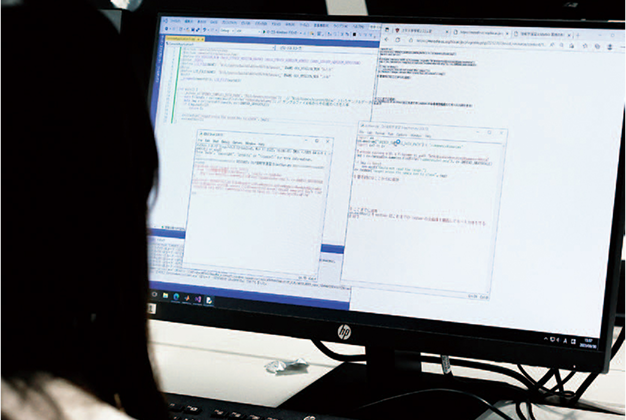 A student is making a program for image processing using C++ and Python.
A student is making a program for image processing using C++ and Python.
-
-
Information and Communication Sciences Lab. I
(Compulsory Course in the Department of Information and Communication Sciences)Students perform experiments on semiconductor devices, electronic circuits, logic operations, electrical circuits, and digital operations to gain a profound understanding of computers and communication hardware. Students are divided into groups, and those in each group work together to perform experiments, organize data, and hold discussions. After that, they add theoretical considerations and discussions to complete laboratory reports. Students can experience and learn subjects that are difficult to understand only from textbooks, by seeing with their own eyes and using their own hands.-
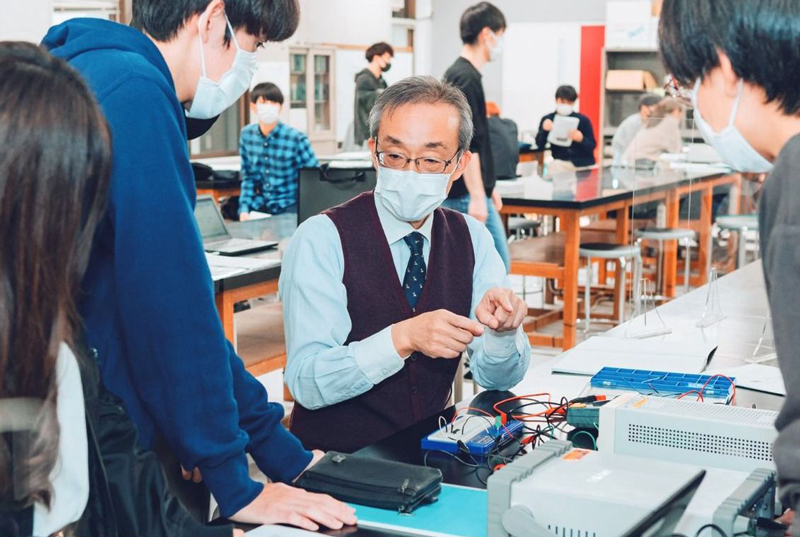 The instructor provides explanations and hints to deepen understanding while examining the experimental system.
The instructor provides explanations and hints to deepen understanding while examining the experimental system. -
 Students connect pieces of experimental equipment themselves and learn how to handle measuring equipment.
Students connect pieces of experimental equipment themselves and learn how to handle measuring equipment. -
 Students perform experiments by cooperating with each other while exchanging opinions.
Students perform experiments by cooperating with each other while exchanging opinions. -
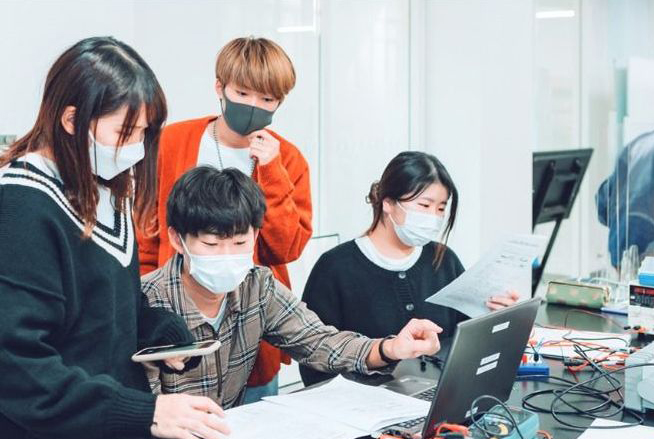 Students perform experiments while confirming correctness and accuracy by evaluating data compiled on a computer.
Students perform experiments while confirming correctness and accuracy by evaluating data compiled on a computer.
-
-
Informatics Exercise II
(Compulsory Course in the Department of Information and Communication Sciences)Students learn Python, a widely used standard programming language for data science and machine learning. They make actual programs in a large computer laboratory while working on the basics of Python programming and on various exercises. In addition, by adopting active learning, programming skills are acquired effectively while the independence of students is well respected.-
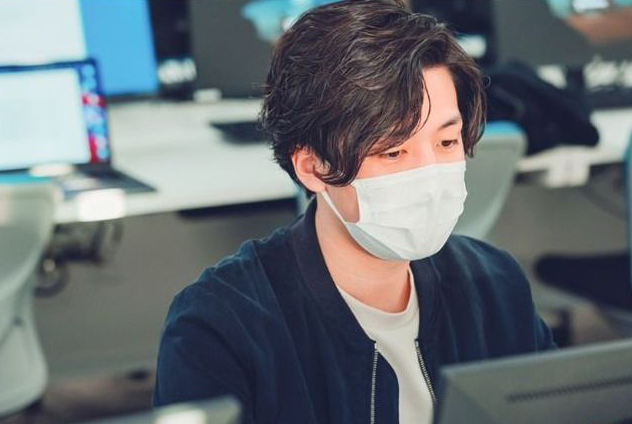 Both students and instructors are required to wear masks during face-to-face exercises.
Both students and instructors are required to wear masks during face-to-face exercises. -
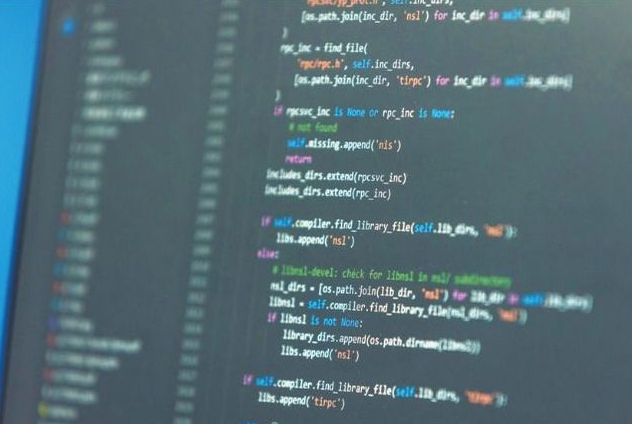 Visual Studio Code is used as the editor for Python codes.
Visual Studio Code is used as the editor for Python codes. -
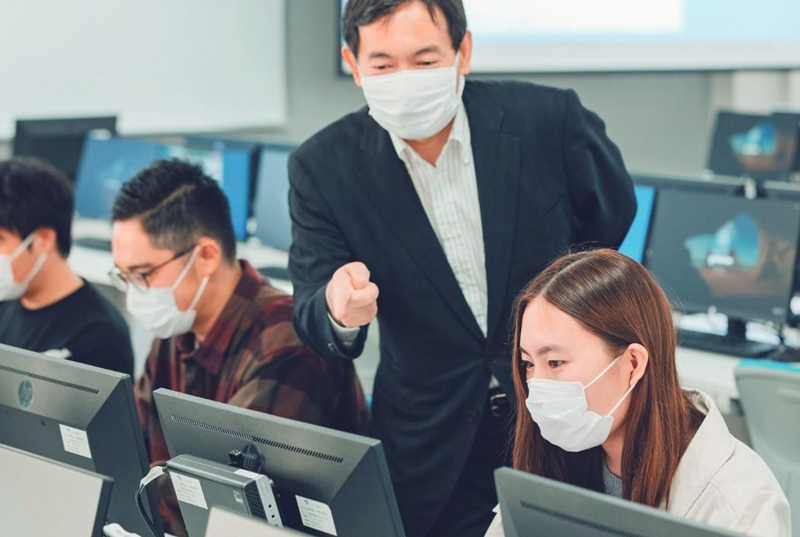 Feel free to ask questions during the exercises.
Feel free to ask questions during the exercises. -
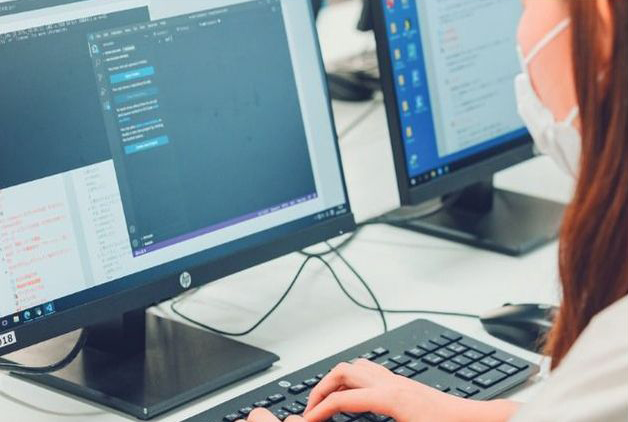 A computer room is available for face-to-face lessons for up to 156 students at the same time.
A computer room is available for face-to-face lessons for up to 156 students at the same time.
-










 Materials and Life Science
Materials and Life Science
 Engineering and Applied Sciences
Engineering and Applied Sciences
 Information and Communication Sciences
Information and Communication Sciences
